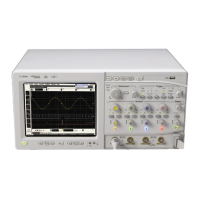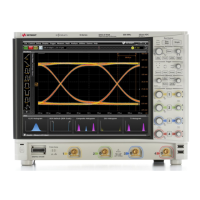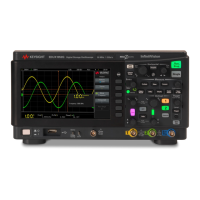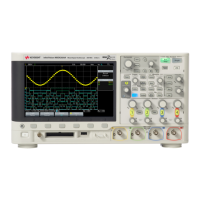Chapter 3: Testing Performance
To verify threshold accuracy
56
• Reduce V1 by 100mV and examine the logic display.
• If all bits are 0, record the previous value of V1 (the value at which at least
one logic bit was still logic 1) as V2 in the table below. Proceed to the Fine
Threshold Voltage search.
• If at least one bit is still logic 1, reset the input voltage to V1.
• Repeat these steps, decreasing V1 by an additional 50mV for each iteration of the procedure, until
all bits are displayed as logic 0. Record the DMM measurement of the last voltage for which at
least one bit was logic 1 as V2 in Table 2.
Table 2: Threshold Voltage Setting and V2
4 Perform the fine threshold voltage search (to determine the measured threshold
voltage within ±5mV.)
a Repeat the following steps until all displayed bits are logic 0:
• Reset V1 to the initial value shown in Table 1.
• Reduce V1 to (V2 - 5mV), and examine the logic display.
• If all bits are logic 0, stop the test and record the value displayed on the DMM
in the Performance Test Record.
• If at least one bit is still logic 1, reset V1 to the initial value shown in Table 1.
• Reduce V1 to (V2 - 10mV), then examine the logic display.
• If all bits are logic 0, then record the value displayed on the DMM in the
Performance Test Record.
• If at least one bit is still logic 1, reset V1 to the initial value shown in Table 1.
• Repeat these steps, decreasing V1 by an additional 5mV for each iteration of the
procedure, until all bits are displayed as logic 0. When all 16 bits have transitioned
to logic 0, record the value displayed on the DMM in the Performance Test Record.
Threshold Voltage Setting V2
+5V
0V
-5V

